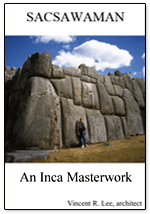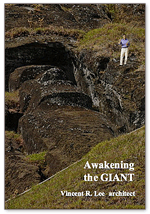ANCIENT MOONSHOTS: Megalithic Mysteries from before Technology
From “El Gigante” on Easter Island to the “Unfinished Obelisk” at Aswan, Egypt, step-by-step solutions of how the ancient architects might have constructed these magnificent feats of engineering
Ancient Moonshots: Megalithic Mysteries from before Technology
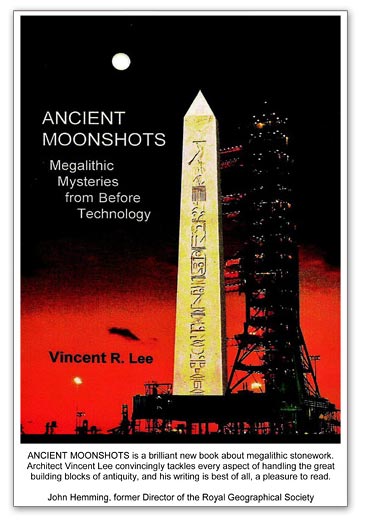
A new book proposing step-by-step solutions to the completion of four of the ancient world’s most mind-boggling but only semi-finished feats of megalithic construction: the boulder-hewn Inca “fortress” of “Sacsawaman” above Cuzco, Peru; “El Gigante,” the 65-foot long “moai” statue still in the quarry on Easter Island; the 1200-ton “Unfinished Obelisk” abandoned in the quarries at Aswan, Egypt, and the enigmatic assemblage of 100,000 tons of the world’s largest dressed stone blocks at the Roman temple-site at Baalbek, Lebanon.
In their times, and for their builders, these were the technological equivalents of our Apollo Space Program. The reader is first offered a 54 page primer on hand methods for manipulating gigantic blocks of stone and a short, but fascinating history of megalithic architecture in the western world, from the huge standing monoliths at Göblekli Tepe, Turkey’s enigmatic 12,000 year old temple site, and the earliest known free-standing megalithic structures on the tiny Mediterranean island of Malta, on through Stonehenge and numerous examples of Egyptian, Minoan, Mycenean and Classical Greek work, culminating with the seldom-visited, but incredible Roman temple of Jupiter-Baal at Baalbek, in its day the largest in the world.
Note: this publication includes the author’s previously published works “SACSAWAMAN, AN INCA MASTERWORK”,“EL GIGANTE, AWAKENING THE GIANT”, “THE UNFINISHED OBELISK” and “BAALBEK’S TRILITHON: AN ENIGMA”, all available as separate publications through this website.
Take a look inside this publication
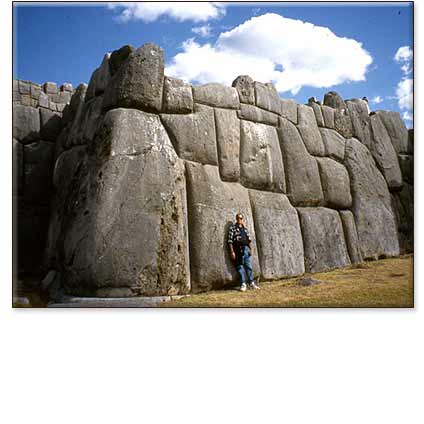 Sacsawaman, Cuzco, Peru
Sacsawaman, Cuzco, Peru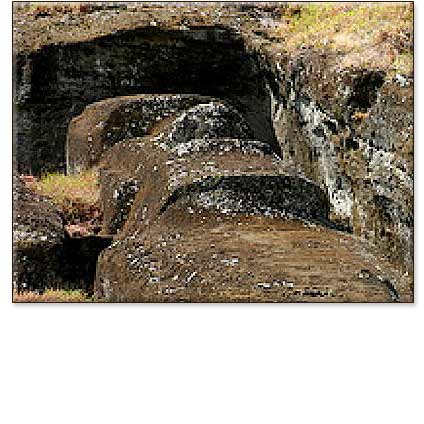 Detail of El Gigante, the largest statue on Easter Island
Detail of El Gigante, the largest statue on Easter Island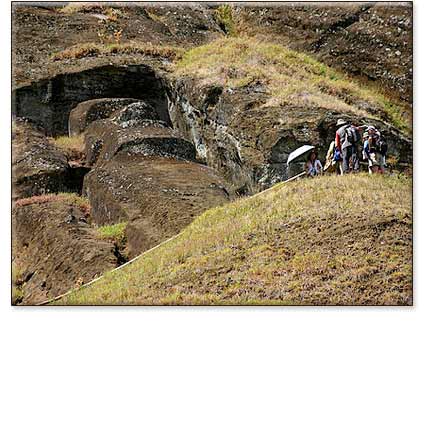 El Gigante on Easter Island, in comparison to human scale
El Gigante on Easter Island, in comparison to human scale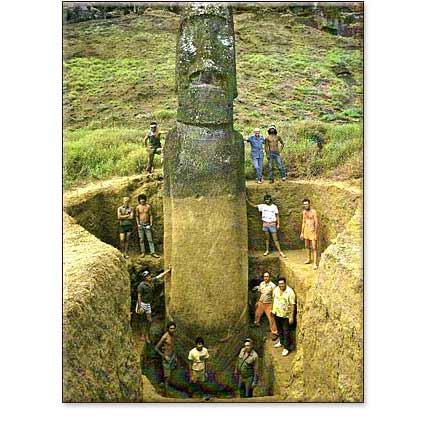 11-meter moai excavated by Thor Heyerdahl, Easter Island
11-meter moai excavated by Thor Heyerdahl, Easter Island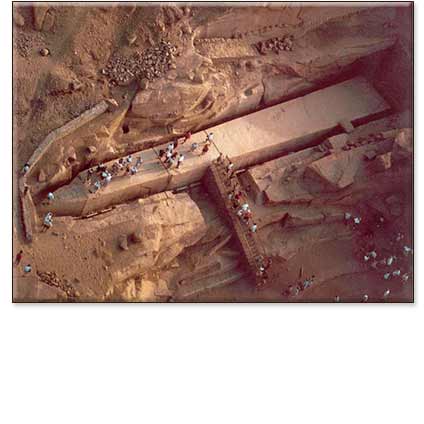 The Unfinished Obelisk, Aswan, Egypt
The Unfinished Obelisk, Aswan, Egypt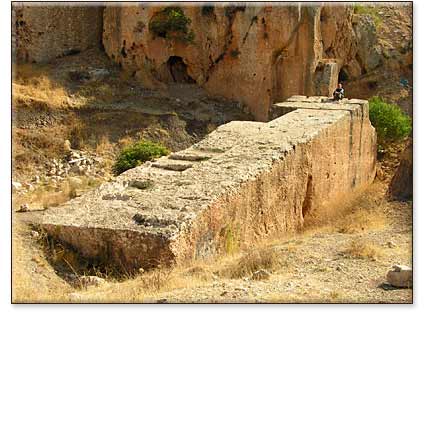 The Largest Dressed Stone in the World, Baalbek, Lebanon
The Largest Dressed Stone in the World, Baalbek, Lebanon Erecting a 1200-ton obelisk, Karnac Temple, Luxor, Egypt
Erecting a 1200-ton obelisk, Karnac Temple, Luxor, Egypt The Temple of Jupiter-Baal, Baalbek, Lebanon
The Temple of Jupiter-Baal, Baalbek, Lebanon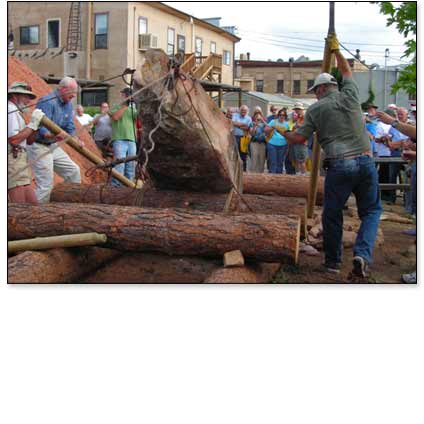 Local enthusiasts flipping a twelve ton standing stone into upright position, Cortez, Colorado, 2009
Local enthusiasts flipping a twelve ton standing stone into upright position, Cortez, Colorado, 2009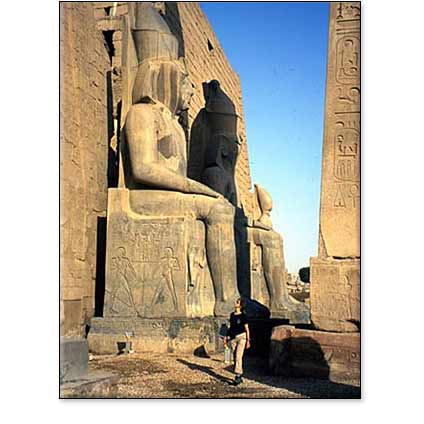 Nancy Lee at Luxor Temple, Egypt
Nancy Lee at Luxor Temple, Egypt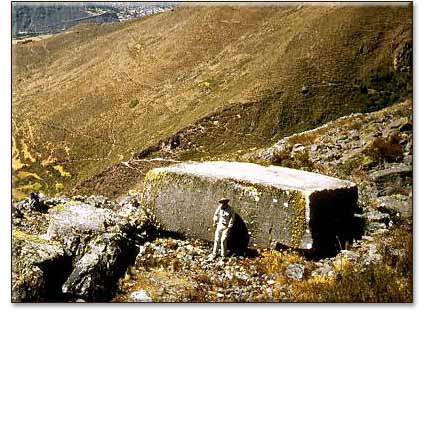 Abandoned 80-ton block, stone quarry, Ollantaytambo, Peru
Abandoned 80-ton block, stone quarry, Ollantaytambo, Peru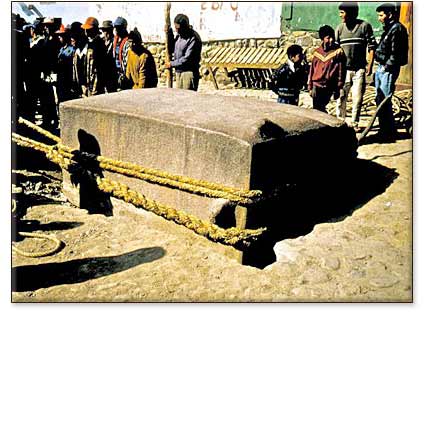 Native crew moving a ten ton Inca block long abandoned in the plaza at Ollantaytambo, Peru, for a 1996 NOVA TV production
Native crew moving a ten ton Inca block long abandoned in the plaza at Ollantaytambo, Peru, for a 1996 NOVA TV production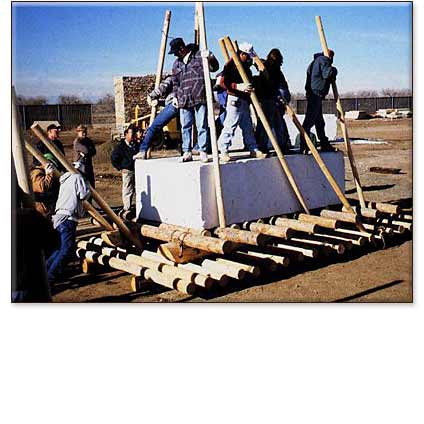 Sisyphus Project, Denver, Colorado 1995
Sisyphus Project, Denver, Colorado 1995 Rare image of moving a huge, stone Assyrian bull on a sled using short rollers under each side with lever men working behind
Rare image of moving a huge, stone Assyrian bull on a sled using short rollers under each side with lever men working behind Extracting a 1200-ton obelisk. granite quarry, Aswan, Egypt
Extracting a 1200-ton obelisk. granite quarry, Aswan, Egypt Steeply battered, polygonal foundation beneath Takamatsu Castle, Shikoku, Japan, ca 1600 C.E.
Steeply battered, polygonal foundation beneath Takamatsu Castle, Shikoku, Japan, ca 1600 C.E.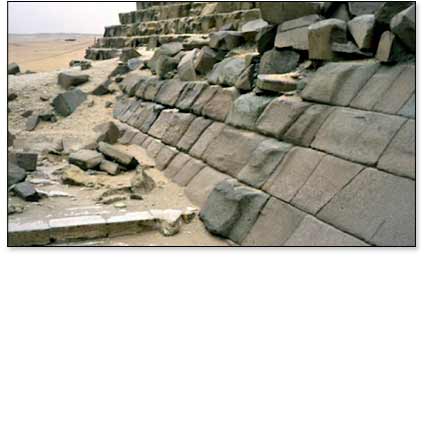 Partly unfinished granite casing blocks at Menkaure’s pyramid, Giza, Egypt, ca 2600 B.C.E.
Partly unfinished granite casing blocks at Menkaure’s pyramid, Giza, Egypt, ca 2600 B.C.E.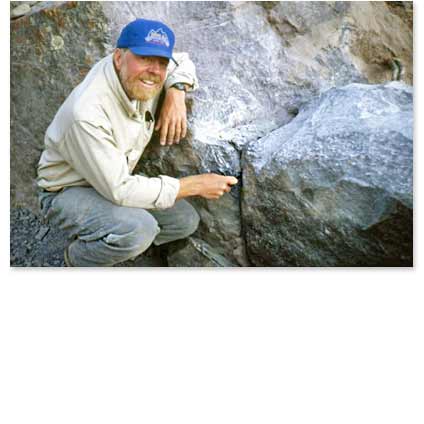 The author showing the perfect fit achieved during the 1994 NOVA demonstration of his "scribing" technique
The author showing the perfect fit achieved during the 1994 NOVA demonstration of his "scribing" technique
Excerpt
Preface
Not long ago, I got an interesting phone call from a very nice lady at the History Channel in Los Angeles asking if I’d be interested in appearing as an “expert” on their “Ancient Aliens” series dealing with several of the projects described in this book. I had only just begun writing and thought it might be a perfect way to expand my research and interact with other researchers with a shared interest in my admittedly esoteric subject. I sent along a wide assortment of my photographs of the sites to be featured in the films and tentatively agreed to participate. Tentatively, because I’d never actually watched the show. My old friend and fellow megalith-mover, Roger Hopkins, had taken part in several episodes, I knew, so I called him and asked his advice. “They don’t know much about messing with big rocks,” he said, with characteristic directness, “but it might be fun.” With that rather tepid endorsement in mind, I resolved to tune in and see for myself how much fun it might be.
My impression of the series was that it favored the idea that extraterrestrials had indeed visited Earth in antiquity and, among other things, assisted the ancients in accomplishing many of their most astounding feats of megalithic construction. As is well known, there’s no way to prove a negative — that something didn’t happen — but as you’ll see, I’m quite sure that no such other-worldly intervention was necessary, and the opportunity to say so and explain why to a large television audience was appealing. So it was with considerable excitement that I watched my very first Ancient Aliens show. Minute by minute, however, my enthusiasm drained away, as talking head after talking head, many of them familiar names in the lucrative field of para-archaeology, intoned about the undisputable evidence favoring celestial visitations. Not a single voice suggested otherwise. Vince Lee’s reservations would either end up “on the cutting room floor,” or be cleverly edited to appear equivocal or worse. I called the nice lady in Los Angeles and declined what I feared would be fifteen minutes of infamy, agreeing, however, to sell the rights to a number of my photographs as recompense for the considerable amount of time I’d invested. She was disappointed. It was, she said, the most popular series they had ever aired!
This book is, in some respects, a response to that “popularity.” There is a time-honored axiom among scientists called “Occam’s razor.” Originally attributed to William of Ockham, (1285-1349) it holds that “the simplest workable solution to a problem is probably the best,” or in our case, the most likely to have been used. Let’s see what William has to say about ancient builders vs. mentors from Andromeda. Clearly, the simplest explanation for the wonders of antiquity is that very clever and industrious people a lot like us built them. This proposition hinges on two points:
- they were just as smart as we are, lacking only the centuries of accumulated knowledge we take for granted today, an idea with which few serious classical historians would disagree, and likely benefitted from arcane knowledge we’ve long since forgotten.
- they had the tools, materials and rudimentary technical skills needed to get the job done, as has been demonstrated time and again by a vast but obscure body of research and experimental archaeology, the subject of much of this book.
Now let’s look at the Ancient Aliens thesis:
- life exists elsewhere in the Universe, likely, but as yet unproven.
- “intelligent” life exists elsewhere in the universe, possible but unproven.
- intelligent extraterrestrial life has visited Earth, possible but unproven.
- such visitations occurred in human antiquity, possible but unproven.
- extraterrestrial visitors interacted with humans, possible but unproven.
- among those interactions were construction projects, possible but unproven.
- such interactions resulted in works otherwise impossible to humans, untrue, as I hope to demonstrate.
To be sure, this is no more than a skeletal outline of what is needed to get little green men into the Great Pyramid, but I think you get the point, so I rest my case. Don’t get me wrong, though. I’m entirely open to the idea of life elsewhere in the cosmos and, despite the daunting limitations of the speed of light, I hope someone’s broken the code on interstellar travel and paid us a visit. I just don’t think we needed them or their knowledge to create the architectural wonders of antiquity. Also, it seems strange that they would have worked so closely with our ancestors yet be so elusive with us today, if the UFO phenomina is real. Odd, too, that beings able to cross the universe at will would have left behind nothing more interesting than piles of big rocks. Even the ancients apparently weren’t all that impressed, given the scarcity and enigmatic nature of the images present day alien advocates credit them with leaving for us, here and there, to record the event. The bottom line, I think, remains that we didn’t need them and managed some pretty amazing stuff entirely on our own.
Before trying to convince you of that, there’s one more common misconception I’d like to quash. If the extraterrestrial boosters think the monuments of old too difficult for us, there’s another group that thinks them too easy — no big deal, in other words. I take issue with them as well. Several years ago, I gave a talk on this subject at the Crow Canyon Archaeological Center, near Cortez, Colorado. Without giving the idea much thought, I finished up likening the most extraordinary ancient projects to our Apollo Moon-landing program. It seemed a no-brainer: we and they both took on the most challenging enterprises of our respective times, pushing the available technology to its limits. After the Q and A period following the talk, a fellow took me aside and thanked me for an interesting evening, but concluded with an oft-heard caveat: “…but there’s really no comparison between those old projects and something like our high-tech space program. Centuries ago, they just put zillions of slaves on the job. It was all just brute force.”
That got me thinking. Though we now know that much of the ancient workforce wasn’t slave labor at all, it’s certainly true that lots of workers were involved. And efficient management of zillions of anything, especially people, is no mean feat, in and of itself. But that wasn’t what struck me about his comment. It was the part about “brute force.” Imagining a Saturn V rocket standing proudly on its launch pad, silhouetted against a gigantic gantry tower, I saw, really for the first, time just how wrong he was.
“Let’s think about that for a moment,” I said. “You’ve got to admit that those guys had to pull together everything they knew about the work at hand, as well as fabricate and assemble all the needed materials and logistic support, pretty much just like we did in the 60s.
Okay, and once that was done, you’re certainly right that they had to figure out how to apply the muscle power of lots of men or animals, or both, to somehow get things moving.” Pausing for effect, and flashing back to my Cape Canaveral scene, I concluded, “now lets compare that to the Moon-shot. Our Saturn V is standing there, ready to go, right? But wouldn’t it be standing there still, three decades later, but for a gigantic carefully controlled explosion?” Brute force indeed!



